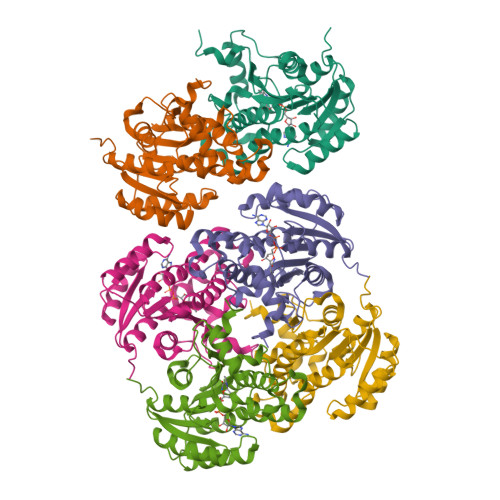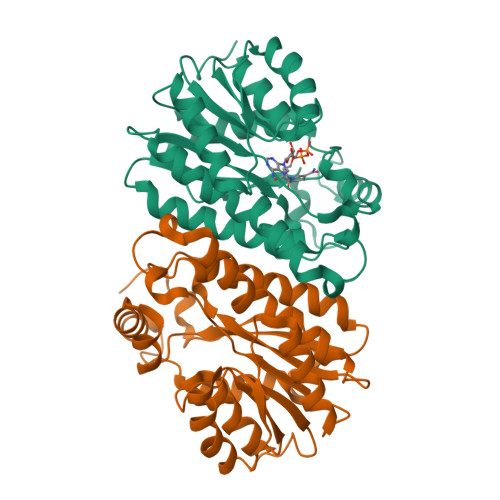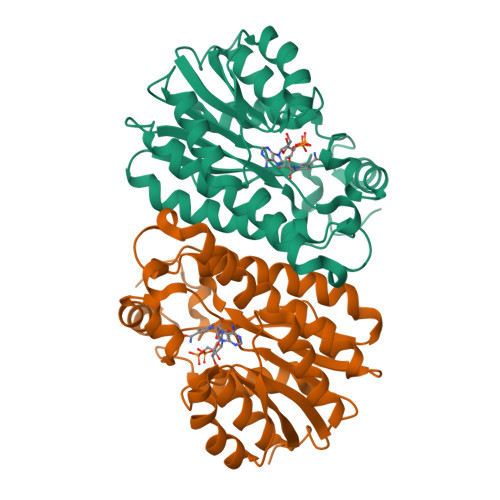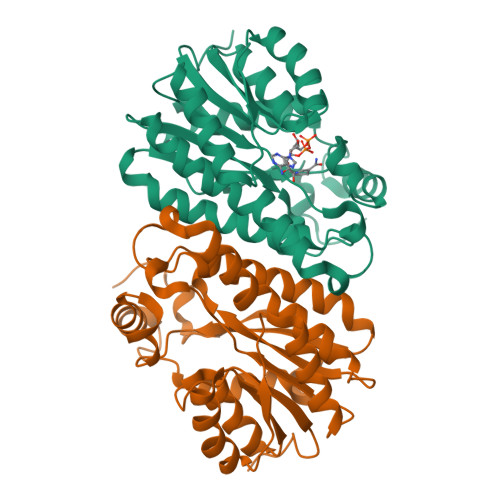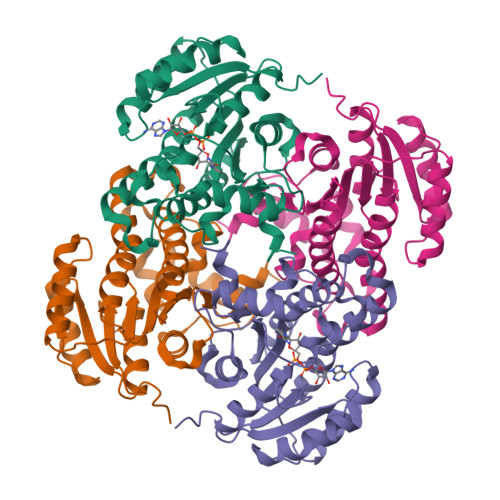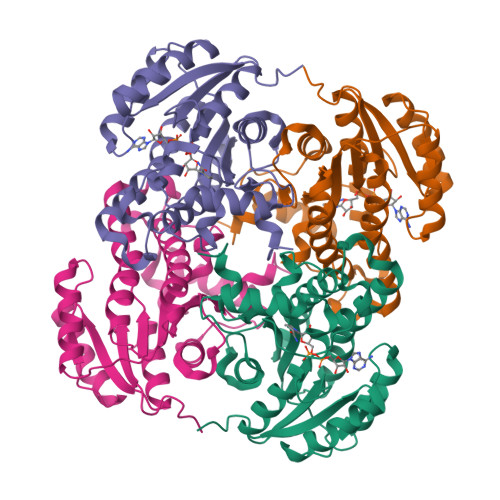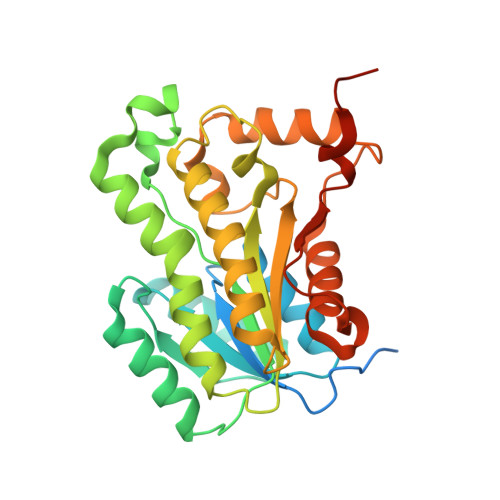Crystal structures and kinetic properties of enoyl-acyl carrier protein reductase I from Candidatus Liberibacter asiaticus.
Jiang, L., Gao, Z., Li, Y., Wang, S., Dong, Y.(2014) Protein Sci 23: 366-377
- PubMed: 24407918
- DOI: https://doi.org/10.1002/pro.2418
- Primary Citation of Related Structures:
4NK4, 4NK5 - PubMed Abstract:
Huanglongbing (HLB) is a destructive citrus disease. The leading cause of HLB is Candidatus Liberibacter asiaticus. Fatty acid biosynthesis is essential for bacterial viability and has been validated as a target for the discovery of novel antibacterial agents. Enoyl-acyl carrier protein reductase (also called ENR or FabI and a product of the fabI gene) is an enzyme required in a critical step of bacterial fatty acid biosynthesis and has attracted attention as a target of novel antimicrobial agents. We determined the crystal structures of FabI from Ca. L. asiaticus in its apoform as well as in complex with b-nicotinamide adenine dinucleotide (NAD) at 1.7 and 2.7 Å resolution, respectively, to facilitate the design and screening of small molecule inhibitors of FabI. The monomeric ClFabI is highly similar to other known FabI structures as expected; however, unlike the typical tetramer, ClFabI exists as a hexamer in crystal, whereas as dimer in solution, on the other hand, the substrate binding loop which always disordered in apoform FabI structures is ordered in apo-ClFabI. Interestingly, the structure of ClFabI undergoes remarkable conformational change in the substrate-binding loop in the presence of NAD. We conclude that the signature sequence motif of FabI can be considered as Gly-(Xaa)5-Ser-(Xaa)n-Val-Tyr-(Xaa)6-Lys-(Xaa)n-Thr instead of Tyr-(Xaa)6-Lys. We have further identified isoniazid as a competitive inhibitor with NADH.
Organizational Affiliation:
Ministry of Education Key Laboratory of Plant Biology, Department of Horticulture and Forestry, Huazhong Agricultural University, Wuhan 430070, China.








